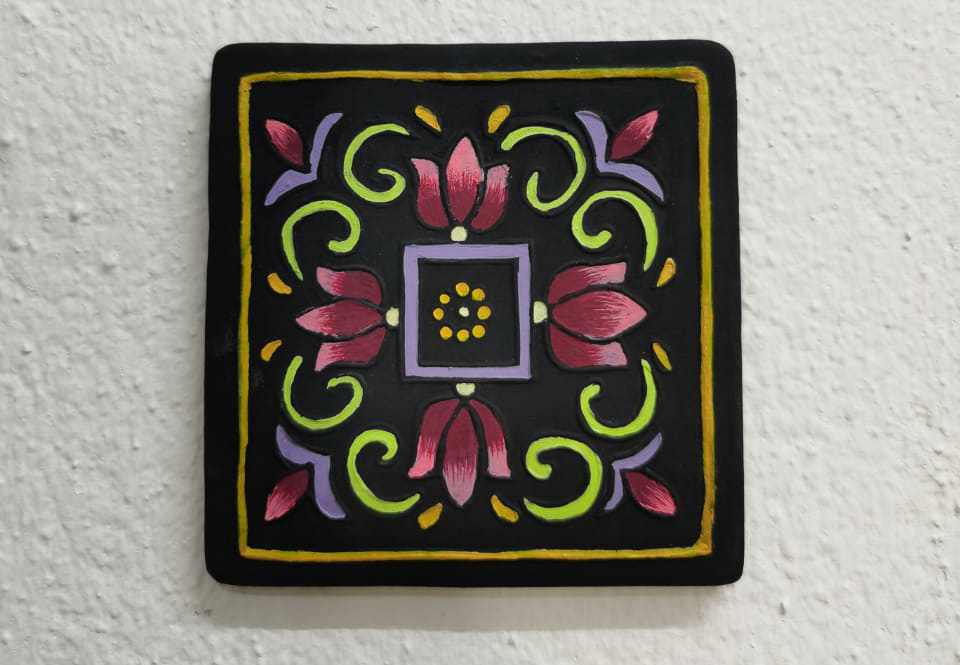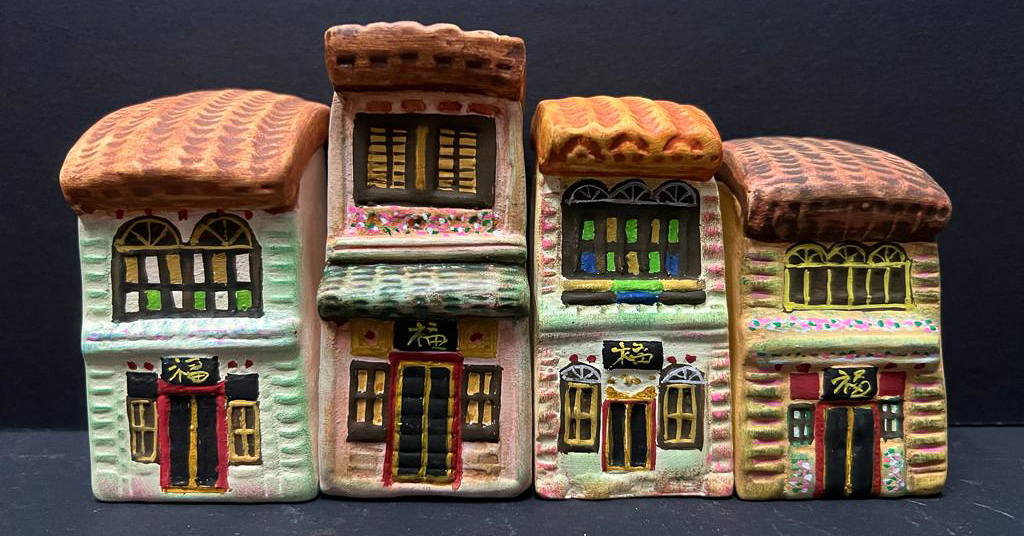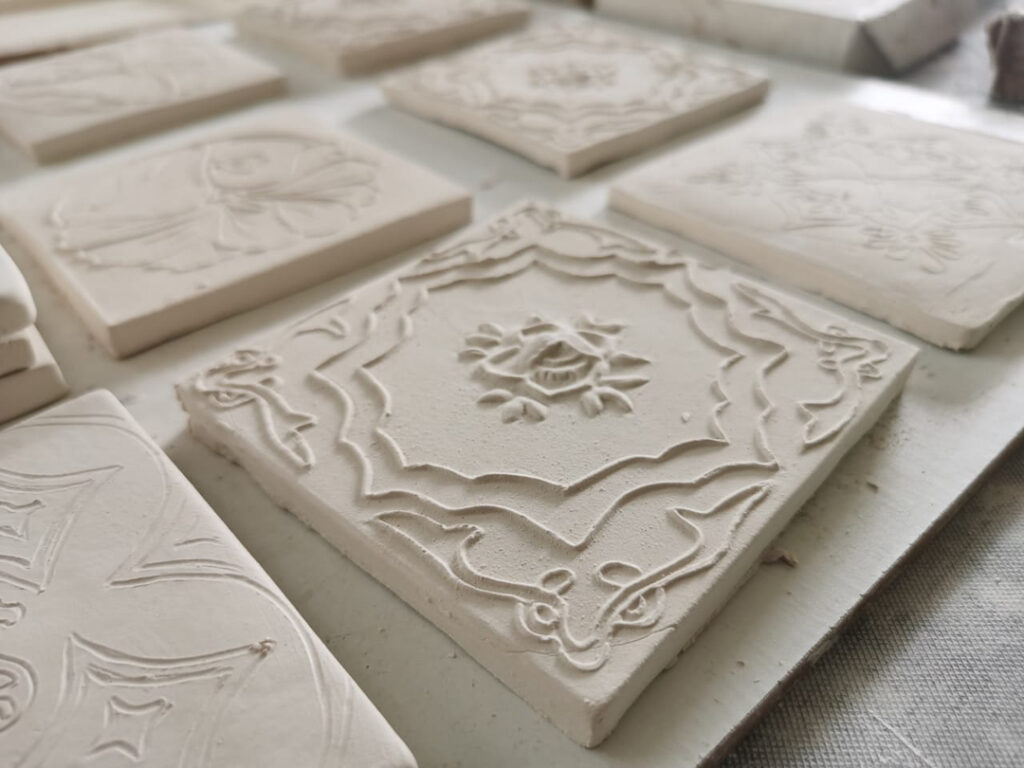(A message to the reader.)
Ananya Mallick explores “hands on” the production of traditional tiles in Malaysia.
There is a charm in old cities that beguiles my heart like no other. I often find myself wandering through ancient cities that are as if frozen in time. Malacca is one of those old small towns in Malaysia where the enchanting era of Peranakan hasn’t moved forward. There I first came to know about Peranakan tiles—a symphony of colours and motifs.
The enthralling beauty of Peranakan tiles found their way to the Malay Archipelago in the early 1900s. Chinese migrants known as “Hokkien” were settling down in the region bringing with them their artistic skills in pottery-making. Their pottery techniques gradually began to intertwine with the local cultures and traditions, which led to the birth of Peranakan tiles.
Five years ago, I was on a summer getaway in Malacca. It was a delightfully whimsical afternoon, caressed by the tender touch of golden sunrays. I was time travelling through visiting traditional Chinese shophouses, and then I first encountered the Peranakan tiles inside a shophouse. The bold and vibrant colour palettes immediately immersed me in bewilderment.
Malacca is not the only place that can hold pride in this ravishing architectural heritage. George Town in Penang is another city in Malaysia that too boasts a myriad of Peranakan tiles that are very common in its colourful facades of the shophouses. These decorative tiles can also be found in Singapore, especially in Joo Chiat Road and Katong, due to their strong roots with the Peranakans.
In the early days, Peranakan tiles served a functional purpose while adorning the walls and floors of traditional Chinese shophouses. Their utilitarian function soon transformed into a form of artistic expression. Influenced by Chinese mythology and folklore and twisted with Malaya flora and fauna, Peranakan tiles became a visual representation of the vibrant and multicultural Peranakan society.
Each motif tells a story
The motifs of Peranakan tiles carry a deeper meaning. Geometric motifs dominate many Peranakan tiles, with recurring patterns of dovetailing shapes and symmetrical formations. These motifs not only create a visually striking effect but also symbolise balance and harmony—the foundational values in Peranakan culture. The “geometric lattice” is a common pattern used on Peranakan tiles believed to ward off evil spirits and bring good luck to the household. Another commonly used pattern is the “basket weave” design, which consists of interwoven squares. This pattern represents unity and strength, reflecting the tight-knit nature of the Peranakan community.
Floral designs are another prominent pattern of Peranakan tiles that mostly includes lotus, chrysanthemums, and peonies, each carrying its own symbolic meaning. Lotus flowers, for example, represent purity and enlightenment, while chrysanthemums embody longevity and resilience. These floral patterns serve as a way to connect with nature and embrace its abundance.
One of the most iconic Peranakan tile designs is the “phoenix and peony” motif. This motif mirrors prosperity, longevity, and beauty. The phoenix, a mythical bird, represents renewal and rebirth, while the peony is a symbol of wealth and grace. Another prevalent pattern is the “rooster on a perch,” a popular symbol of courage and strength. Paired with playful geometric patterns, this design showcases the Peranakan’s zest for life and their willingness to face any challenges with determination.
The “bamboo and chrysanthemum” pattern combines Chinese and Western influences. The bamboo represents resilience and flexibility, while the chrysanthemum indicates longevity. “Blue Blossom” features delicate, blue-hued flowers set against a white background to exude sophistication and charm.
The “Kerawang” is a lace-like pattern created through painstakingly carved and painted details. The “Sarong Kebaya” pattern is another beloved motif in Peranakan tiles. It is inspired by the traditional attire worn by Peranakan women. This pattern features diagonal or diamond-shaped motifs reminiscent of the Semen Kebaya, or the kebaya fabric. The Sarong Kebaya design embodies elegance and femininity, making it a popular choice for those seeking a touch of luxury in their interior spaces.
The craftsman behind continuing the legacy
As time passes, the beauties of the past fade away, and finding craftsmen who can preserve these delicate tiles is becoming a challenging feat. Ronald Wong, a pottery artist, is one of the dedicated young practitioners to revive this historical art form. His creative venture Zen Ceramic is breathing new life into Malacca’s local architectural heritage by producing and selling customised Peranakan tiles. This Malacca-based creative hub often offers workshops and classes, allowing the new generation to learn about the history and artistry behind these tiles. It also has a little shop at the corner where art lovers and tourists can buy these tiles as souvenirs.
I learned the painting technique for Peranakan tiles from Wong at Zen Ceramic. Later he showed me the entire process of the making of a Peranakan tile in his pottery space.
It requires a blend of artistry and technical expertise
The creation process of Peranakan tiles is truly a labour of love. It all begins with a design, then it is transferred onto a mould. The mould is typically made from cast iron, which serves as a template for creating multiple tiles. Afterwards, the makers proceed to mix the clay. The composition of the clay mixture determines the durability and colour of the tiles. So, the makers need to carefully measure the combination of clay, sand, and water and mix them in specific proportions to achieve the desired consistency. This process requires precision and experience, as even a slight variation in the mixture can affect the final product.
Once the clay mixture is poured into the mould, the makers scrape off the excess clay to ensure a smooth surface. The mould is then left to dry for several days, allowing it to harden and take shape. This drying process is crucial. It strengthens the tile and prevents cracks or warping during firing.
The dried tiles are then carefully placed in kilns, where they are fired at high temperatures to solidify and strengthen the clay. After the tiles have been fired, artisans add paint to the tiles. Then undergo a meticulous glazing process. This glazing technique is one of the most fascinating aspects of the Peranakan tiles-making process that gives the tiles their signature glossy texture.
Then the tiles undergo a second firing process. This firing enhances the vibrant and glazed finish. The high temperatures of the kiln cause the glaze to melt and fuse with the clay, creating a durable and long-lasting surface.
I asked Wong, “What’s your favourite motif among all?” Wong has created a new floral motif with a contemporary and very vigorous colour combination. He has named it Modern Vintage. “I love it because of its colours and elegant design. It is a timeless and beautiful choice for display or gift for someone special,” Wong describes his personal liking for Peranakan motifs. He keeps innovating new motifs intersecting the old ones with contemporary themes that celebrate the transformation of the modern Peranakan community.
About Ananya Mallick
 Ananya Mallick works in project management and lives in Malaysia. She is also a freelance journalist and photographer focused on art and culture and solutions journalism. She is currently working on her landscape photography project, The call of the mountains.
Ananya Mallick works in project management and lives in Malaysia. She is also a freelance journalist and photographer focused on art and culture and solutions journalism. She is currently working on her landscape photography project, The call of the mountains.






